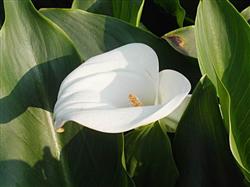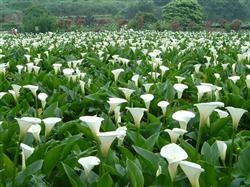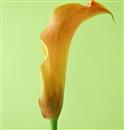Key points of horseshoe cultivation techniques

1. Variety selection should be made from high-yield and disease-free horseshoe fields, with complete appearance, disease-free wounds, full corms and strong bud heads as seeds, with a size of less than 30 per jin and 120 tons and 150 jin per mu. Second, soak the seeds for 10 hours with 800 times before raising seedlings to prevent stem blight, and choose sandy loam or vegetable garden with no waterlogging and loose and fertile soil layer. Before raising seedlings, the seedling bed should be fully fertilized, and the seed balls should be arranged on the seedling bed according to the distance of 4mur5 centimeters, and the top buds should be up, covered with soil and watered thoroughly. After finishing the seedlings, if the seedling leaves are yellow, they can be drenched with fecal water or 0.5% urea, and the transplanting medicine should be sprayed before transplanting. The seedlings should be sprayed with Ruijinte spray to control stem blight and white borer, and the seedling raising time should be 25aft 30 days. Third, 20-30 kilograms of rotten farm manure, 50 kilograms of calcium magnesium phosphate fertilizer, 5 kilograms of boron zinc magnesium iron fertilizer and 25 kilograms of potassium sulfate compound fertilizer are applied per mu of base fertilizer. Fourth, timely transplanting, reasonable close planting is generally transplanting before the middle and late July, transplanting density: thin field should be dense, fertilizer field should be sparse, general plant spacing is 40 × 50ml 60cm, 2500Mu planting 3300 plants, cutting depth 5-6cm, rooting powder No. 5 can be used when transplanting. Fifth, water management after the horseshoe turns green to the tillering stage, maintain the shallow water layer, which is beneficial to the horseshoe tillering. after the re-application of shepherd manure, it is necessary to maintain the deep water layer to avoid fatness and poison in the horseshoe. 6. Fertilization of horseshoe is divided into four times: 1. Huiqing Fertilizer: for 7 days after horseshoe cuttings, 3.5 Mu of urea is used to apply 5 kg of urea. 2. Tillering fertilizer: the fertilizer needed for tillering of horseshoe should be sprinkled with urea 10 kg and potassium sulfate compound fertilizer 10 kg per mu for 20 days after horseshoe cuttings. 3. Shepherd's manure: heavy application of shepherd's manure, in the middle of September, 50ml / mu bran, 25kg / mu potassium sulfate compound fertilizer, 10kg / mu strong seedling agent and 20kg potassium sulfate at the end of September. 4. Peng Da Fertilizer in bulb stage: applied in the middle of October, it is an important fertilizer for horseshoe expansion, and 20 kg potash fertilizer is applied for horseshoe Wagen expansion per mu. Attention to fertilization: do not apply chlorine compound fertilizer. 7. Skillfully apply hormones to seedlings at the end of September, such as vigorous application of paclobutrazol (100m / mu, 150g / mu) plus rooting powder No. 5 (4 packets per mu, 3 times in a row), rooting powder should be dissolved with cosolvent, if the seedling is not good, only rooting powder should be applied. Disease and pest control 1. White borer (heart borer): spray it with Regent before transplanting, apply fertilizer in the middle of September, and kill it with insecticidal powder or insecticidal powder. 2, horseshoe stem blight, powdery mildew, mildew can choose Xianggli, Senmei or Tianguan spray, once a week, spray agent is better, and pay attention to supplement foliar fertilizer. 3. Physiological red tail is caused by lack of trace elements such as boron, zinc, magnesium and so on. 5kg of boron, zinc, magnesium and iron fertilizer can be applied per mu. Spray note: do not use Jingangmycin or drugs containing Jinggangmycin.
- Prev

How to control the diseases of calla lilies
The main pests that harm calla lilies are: two-point spider mite, that is, cotton spider mite and cotton red spider. The back of Tetranychus urticae is oval, the back of male is rhombus, the color in spring and summer is yellow and yellowish green, there is a black patch on each side, and the body color becomes orange by the end of summer.
- Next

Control methods of leaf spot of Zantedeschia mandshurica
First, symptoms infected leaves produce light brown to yellowish brown spots, mostly round, oval or irregular. A few diseases have inconspicuous wheel lines. In the later stage of the development of the disease, many black dot-like molds were produced in the center of the disease spot, that is, the conidia of the pathogen. Second, the pathogen and the disease.
Related
- Fuxing push coffee new agricultural production and marketing class: lack of small-scale processing plants
- Jujube rice field leisure farm deep ploughing Yilan for five years to create a space for organic food and play
- Nongyu Farm-A trial of organic papaya for brave women with advanced technology
- Four points for attention in the prevention and control of diseases and insect pests of edible fungi
- How to add nutrient solution to Edible Fungi
- Is there any good way to control edible fungus mites?
- Open Inoculation Technology of Edible Fungi
- Is there any clever way to use fertilizer for edible fungus in winter?
- What agents are used to kill the pathogens of edible fungi in the mushroom shed?
- Rapid drying of Edible Fungi

